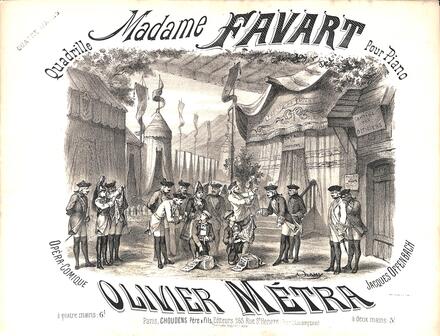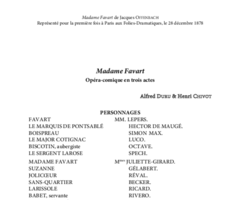Madame Favart

It was on 28 December 1878 that the Folies-Dramatiques staged the premiere of Offenbach’s three-act opéra-comique, Madame Favart, to a text by Chivot and Duru. These two librettists, who had already racked up successes with Lecocq and Hervé, again drew their inspiration for this opera from two real-life characters: the famous actress Justine Favart and her husband, Charles-Simon. During this same period, the dancer La Camargo (Lecocq) was also brought to the stage, just as later Hahn was to take an interest in Mademoiselle Guimard. The plot – purely imaginary – is governed more by the rhythms and popular dances conjuring up the background of these two performers than by a more predictable Neoclassicism. In the overture and one chorus of the first act, Offenbach intentionally quotes the song “Elle aime à rire, elle aime à boire” by Fanchon, the hurdy-gurdy girl, a character successfully played at the time by Madame Favart. Likewise, in Act III, a mise en abyme features a section from the opéra-comique La Chercheuse d’esprit, another of the couple’s great triumphs. Using Madame Favart’s reputation for excelling in quick-change parts, the work revolves around repeated mistaken identities that force the main protagonist to adopt various disguises as she deals with various misadventures.


